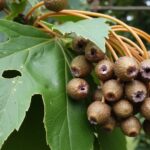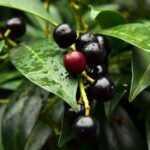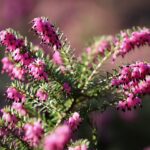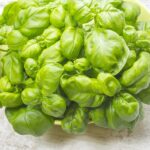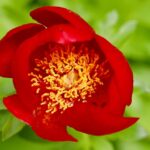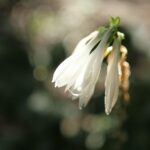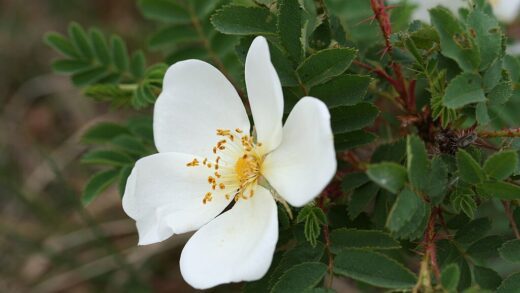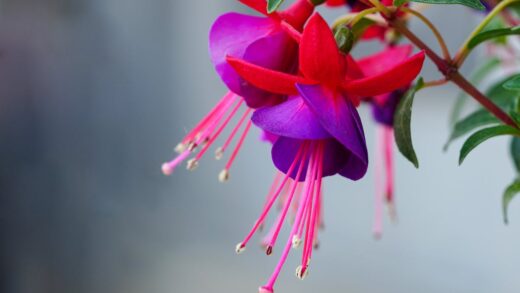As the vibrant growing season of spring and summer gives way to the shorter, cooler days of autumn and winter, the Dieffenbachia, like many tropical houseplants, enters a period of natural dormancy. Overwintering is the practice of adjusting the plant’s care routine to accommodate this significant shift in its metabolic rate and environmental conditions. This is not a time for encouraging new growth, but rather for maintaining the plant’s health and helping it conserve energy until it is ready to resume its vigorous growth in the spring. Successful overwintering is crucial for the long-term vitality of the plant and ensures it emerges from the dormant period strong and ready for the year ahead.
The primary challenge of overwintering a Dieffenbachia indoors is compensating for the dramatic reduction in natural light and the often-dry air created by central heating systems. The plant’s physiological processes, including photosynthesis and water uptake, slow down considerably in response to the lower light levels. Failure to adjust care practices, particularly watering and fertilizing, to match this reduced activity is the most common reason that these plants struggle during the winter months. The goal is to provide a stable, supportive environment that minimizes stress and allows the plant to rest.
This period of dormancy is a normal and necessary part of the plant’s annual cycle. It is a time for the plant to consolidate its resources and prepare for the next burst of growth. By understanding and respecting this natural rhythm, a grower can avoid common winter pitfalls such as overwatering, leaf drop, and pest infestations, which tend to proliferate on stressed plants. The adjustments required are simple but significant, revolving around the key elements of light, water, temperature, and nutrition.
A well-managed winter period will see the Dieffenbachia maintain its existing foliage and overall health, even if it does not produce any new leaves. It is a time of quiet maintenance, not active cultivation. By providing the right conditions, you ensure that when the days begin to lengthen again and the first signs of spring appear, your Dieffenbachia will be well-rested and prepared to reward you with a spectacular display of fresh, vibrant growth.
Preparing the plant for dormancy
The transition into winter dormancy should be a gradual process that begins in the autumn. As the days shorten and the intensity of the sunlight wanes, the plant will naturally begin to slow its growth. This is the signal to start adjusting your care routine. The first and most important change is to gradually reduce the frequency of watering. Since the plant is using less water for photosynthesis and transpiration, the soil will take longer to dry out. It is essential to start checking the soil moisture more carefully, allowing the top several centimeters to dry out completely before providing more water.
Autumn is also the time to cease all fertilization. Continuing to feed a plant as it enters dormancy can do more harm than good. The plant is not in a state to utilize the extra nutrients, which can then accumulate in the soil as mineral salts. This buildup can burn the roots and cause significant stress to the plant at a time when it is already becoming more vulnerable. The last application of fertilizer should be in the late summer or early autumn, and feeding should not resume until new growth is observed in the spring.
Before bringing any plants indoors for the winter that may have spent the summer outside, or simply as a general preparatory measure, it is wise to give the Dieffenbachia a thorough inspection for pests. Pests like spider mites and mealybugs can proliferate in the warm, dry conditions of a centrally heated home. Carefully examine the leaves, especially their undersides, and the stems for any signs of infestation. Treating any existing pest issues before the plant enters its winter rest period is much easier and will prevent a small problem from becoming a major one over the winter months.
A gentle cleaning can also be beneficial in preparing the plant for the lower light conditions of winter. The large leaves of the Dieffenbachia can accumulate a significant amount of dust over the summer, which can block the already limited light from reaching the leaf surface and hinder photosynthesis. Use a soft, damp cloth to wipe down each leaf, removing any dust and grime. This simple step maximizes the plant’s ability to absorb the available light and helps it to stay healthier throughout the winter.
Adjusting light and temperature
Light is one of the most critical factors during the overwintering period. With the sun lower in the sky and the days being significantly shorter, the amount of available natural light inside a home drops dramatically. To compensate for this, you may need to move your Dieffenbachia to a brighter location than its summer spot. The ideal winter location is often a south-facing window, where the plant can receive the most direct, albeit weaker, sunlight of the day. An east or west-facing window can also be suitable. The goal is to provide as much bright, indirect light as possible to help the plant maintain its energy reserves.
While providing more light is important, it is also crucial to monitor the plant’s leaves for any signs of stress. Even the weaker winter sun can potentially scorch the leaves if it is too direct and intense, especially through a window that magnifies its effect. If you notice any pale, washed-out spots or brown, crispy patches developing on the leaves, pull the plant back slightly from the window or diffuse the light with a sheer curtain. Regularly rotating the plant every week or so will also ensure that all sides receive even light exposure, preventing it from leaning towards the window.
Temperature stability is another key aspect of successful overwintering. Dieffenbachia are tropical plants that are highly intolerant of cold. They should be kept in a location where the temperature remains consistently between 16°C and 24°C (60°F and 75°F). More importantly, they must be protected from sudden temperature fluctuations and cold drafts. This means keeping them away from drafty windows, doors that are frequently opened to the outside, and unheated rooms or porches. A sudden blast of cold air can shock the plant, causing it to dramatically drop its lower leaves.
Conversely, placement near heat sources should also be avoided. Positioning a Dieffenbachia next to a radiator, heating vent, or fireplace will expose it to hot, dry air that can quickly desiccate its leaves, leading to brown, crispy edges and making it more susceptible to pests like spider mites. The ideal spot is one where the temperature is stable and moderate, away from the extreme highs and lows that can occur near windows and heating elements.
Modifying watering and feeding routines
The single most important adjustment for overwintering a Dieffenbachia is a significant reduction in watering. As the plant’s growth slows to a near standstill, its water requirements plummet. The combination of lower light levels and cooler temperatures means that the soil will remain moist for a much longer period. Continuing to water on a summer schedule is a guaranteed recipe for overwatering and root rot, the number one killer of houseplants in winter. The frequency of watering might decrease from once a week to once every two, three, or even four weeks, depending on your specific home environment.
The only reliable way to know when to water during the winter is to ignore the calendar and rely entirely on checking the soil. Before even thinking about watering, insert your finger deep into the pot. You should allow the soil to dry out much more thoroughly than you would in the summer. It is generally safe to wait until the top 5-7 cm (2-3 inches) of the soil are completely dry. When you do water, do so thoroughly until water runs out the bottom, but be absolutely certain to let the pot drain completely and never let it sit in a saucer of water. It is always safer to err on the side of underwatering during the winter.
As previously mentioned, fertilization should be stopped entirely during the overwintering period. The plant is in a state of rest and is not actively producing new growth, so it has no use for the supplemental nutrients provided by fertilizer. Adding fertilizer to the soil of a dormant plant will not encourage it to grow; instead, the unused mineral salts will accumulate in the soil. This buildup can become toxic to the roots, causing chemical burn and damage that can weaken or even kill the plant.
The feeding moratorium should last throughout the entire dormant period, typically from October through to March in the Northern Hemisphere. Do not be tempted to give the plant a “little boost” during a mild spell in winter. Wait until you see clear, consistent signs of new growth in the spring. The emergence of new, small leaves is the plant’s signal that it is breaking dormancy and is ready to start its active growth cycle again. This is the correct time to resume a regular, diluted feeding schedule.
Managing humidity and potential problems
Winter is a challenging time for humidity-loving tropical plants like Dieffenbachia. Central heating systems, while keeping our homes warm, also create extremely dry air, causing ambient humidity levels to plummet. This dry air increases the rate of transpiration from the plant’s large leaves, which can lead to brown, crispy leaf edges and tips. It also creates the perfect breeding ground for spider mites, a pest that thrives in low-humidity conditions. Therefore, taking steps to increase the humidity around your plant is a critical part of winter care.
There are several effective ways to boost local humidity. Grouping your Dieffenbachia together with other houseplants can create a more humid microclimate as they all release moisture into the air through transpiration. A more direct method is to place the plant’s pot on a pebble tray. This is a shallow tray filled with pebbles and water; the pot sits on top of the pebbles, above the water line, and as the water evaporates, it raises the humidity in the immediate vicinity of the plant. For a more significant and consistent increase in humidity, using a small room humidifier is the most effective solution.
Despite best efforts, some leaf drop during winter is normal. It is common for a Dieffenbachia to shed a few of its older, lower leaves as it conserves energy during dormancy. This should not be a cause for alarm unless the leaf drop is sudden, excessive, or accompanied by other signs of distress like mushy stems, which would indicate a more serious problem like root rot. Simply prune off the yellowing leaves to keep the plant looking tidy.
Pest control remains important throughout the winter. Because plants are often in a slightly stressed state due to the suboptimal conditions, they can be more susceptible to infestations. Continue to inspect your plant regularly, especially the undersides of the leaves, for any signs of pests like spider mites or mealybugs. If you do find pests, treat them immediately using the least toxic methods, such as wiping them off or using an insecticidal soap, to prevent the population from becoming established during the long winter months.

